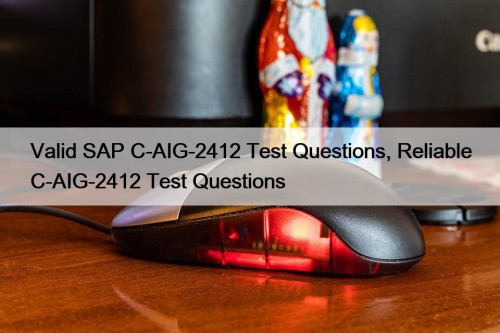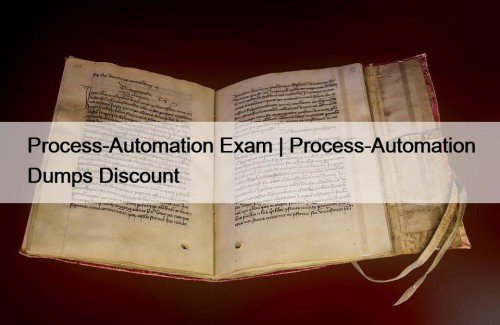Most Popular
 100% Pass Quiz ITIL ITIL-4-Specialist-Create-Deliver-and-Support - High Hit-Rate ITIL 4 Specialist: Create, Deliver and SupportExam Pass4sure Study Materials
100% Pass Quiz ITIL ITIL-4-Specialist-Create-Deliver-and-Support - High Hit-Rate ITIL 4 Specialist: Create, Deliver and SupportExam Pass4sure Study Materials
As the saying goes, time is the most precious wealth ...
 Valid SAP C-AIG-2412 Test Questions, Reliable C-AIG-2412 Test Questions
Valid SAP C-AIG-2412 Test Questions, Reliable C-AIG-2412 Test Questions
Passing the C-AIG-2412 certification can prove that and help you ...
 Process-Automation Exam | Process-Automation Dumps Discount
Process-Automation Exam | Process-Automation Dumps Discount
2025 Latest Pass4suresVCE Process-Automation PDF Dumps and Process-Automation Exam Engine ...



Valid ACP-120 Test Pdf, Latest ACP-120 Exam Experience

P.S. Free 2025 ATLASSIAN ACP-120 dumps are available on Google Drive shared by ValidBraindumps: https://drive.google.com/open?id=1wRevdg8lM9Sg-HXmJhorJRVTtriEpFb1
No matter where you are or what you are, ACP-120 practice questions promises to never use your information for commercial purposes. If you attach great importance to the protection of personal information and want to choose a very high security product, ACP-120 Real Exam is definitely your first choice. And we always have a very high hit rate on the ACP-120 study guide by our customers for our high pass rate is high as 98% to 100%.
ATLASSIAN ACP-120 (Jira Cloud Administrator) Exam is an industry-recognized certification that validates the skills and knowledge required to configure, manage, and maintain Jira Cloud environments. ACP-120 exam is designed for professionals who are responsible for administering Jira Cloud instances and ensuring that they are optimized for their organization's needs. With this certification, individuals can demonstrate their proficiency in Jira Cloud administration and enhance their career prospects in the field of project management.
ATLASSIAN ACP-120 (Jira Cloud Administrator) Certification Exam is designed for individuals who are interested in becoming proficient in administering Jira Cloud. Jira is a project management tool designed to help teams track and manage their work. As a Jira Cloud Administrator, you will be responsible for configuring and maintaining Jira Cloud for your organization. The ACP-120 certification exam covers a range of topics related to Jira Cloud administration, including user management, project management, and system administration.
ValidBraindumps ACP-120: The Penetration Tester's Guide Test Engine
The ValidBraindumps is one of the leading ATLASSIAN ACP-120 exam preparation study material providers in the market. The ValidBraindumps offers valid, updated, and real Jira Cloud Administrator ACP-120 exam practice test questions that assist you in your ACP-120 Exam Preparation. The ATLASSIAN ACP-120 exam questions are designed and verified by experienced and qualified ATLASSIAN exam trainers.
ATLASSIAN ACP-120 (Jira Cloud Administrator) Exam is a certification that is designed to validate the skills and expertise of Jira Cloud Administrators. Jira is a popular software development tool that is used by thousands of companies worldwide. Jira Cloud Administrator certification is a testament to an individual's ability to manage and administer Jira, ensuring that it is running efficiently and effectively.
ATLASSIAN Jira Cloud Administrator Sample Questions (Q64-Q69):
NEW QUESTION # 64
You renamed a value in the Resolution field from Done to Finished. What might need to be updated as a result?
- A. Saved filters
- B. Issue detail view
- C. Issue Statistics gadgets
- D. Issues in team-managed projects
- E. Workflow post functions
Answer: A
Explanation:
Renaming a value in theResolutionfield (fromDonetoFinished) changes its display name globally in Jira Software Cloud. This can impact configurations or features that reference the resolution value by name, particularly in JQL queries. The element most likely to need updating issaved filters(Option B), as they often use JQL queries that include resolution values.
* Explanation of the Correct Answer (Option B):
* Saved filtersoften use JQL queries that reference resolution values (e.g., resolution = Done). If theResolutionfield value is renamed fromDonetoFinished, any filters using resolution = Done will no longer match issues with the renamed resolution (Finished), as the old value is no longer valid. These filters must be updated to use resolution = Finished to continue returning the correct issues.
* Exact Extract from Documentation:
Manage resolutions in Jira Cloud
Resolutions are global values used in theResolutionfield to indicate an issue's resolution state.
Impact of renaming a resolution:
* JQL queries in filters, boards, or gadgets referencing the resolution name (e.g., resolution = Done) will no longer match issues if the value is renamed (e.g., to Finished).To update:
* Go toIssues > Manage filters.
* Edit filters to use the new resolution name (e.g., resolution = Finished).Note: Renaming a resolution affects all projects and requires updating JQL-based configurations.(Source:
Atlassian Support Documentation, "Manage resolutions in Jira Cloud")
* Why This Fits: Renaming a resolution value impactssaved filtersthat use JQL queries referencing the old value, requiring updates to maintain functionality, making Option B the correct answer.
* Why Other Options Are Incorrect:
* Workflow post functions (Option A):
* Workflow post functionscan set theResolutionfield (e.g.,Set Issue ResolutiontoDone).
These post functions typically use the resolution's internal ID, not its display name, so renamingDonetoFinisheddoes not require changes to post functions.
* Extract from Documentation:
Post functions reference resolution IDs, not names. Renaming a resolution does not affect workflow configurations.
(Source: Atlassian Support Documentation, "Configure advanced work item workflows")
* Issue detail view (Option C):
* Theissue detail viewdisplays theResolutionfield value as configured. RenamingDoneto Finishedupdates the display automatically without requiring manual changes to the issue detail view or its configuration (e.g.,issue layout).
* Extract from Documentation:
The issue detail view reflects the current resolution name automatically. No changes are needed after renaming a resolution.
(Source: Atlassian Support Documentation, "Configure issue layouts in Jira Cloud")
* Issue Statistics gadgets (Option D):
* Issue Statistics gadgets(e.g., on dashboards) can display data based on fields like Resolution. While gadgets may reference resolution values in their configuration, they typically use resolution IDs or dynamically update to reflect the renamed value. The impact is less direct than with saved filters, which rely on explicit JQL queries.
* Extract from Documentation:
Gadgets like Issue Statistics use field values or IDs. Renaming a resolution may not require gadget updates unless JQL queries are explicitly used.
(Source: Atlassian Support Documentation, "Manage dashboards in Jira Cloud")
* Issues in team-managed projects (Option E):
* Resolutionsare global and apply to both company-managed and team-managed projects.
RenamingDonetoFinishedupdates the value for all issues, including those in team- managed projects, without requiring changes to the issues themselves. The change is reflected automatically.
* Extract from Documentation:
Resolutions are global and apply to all projects. Renaming a resolution updates its display for all issues without requiring issue-level changes.
(Source: Atlassian Support Documentation, "Manage resolutions in Jira Cloud")
* Additional Notes:
* Renaming a resolution is done inSettings > Issues > Resolutionsand requiresJira administrator privileges.
* Other JQL-based features (e.g., automation rules, boards) may also be impacted if they reference the resolution name, butsaved filtersare the most commonly affected.
* To minimize impacts, use resolution IDs in JQL queries (e.g., resolution = 10000), though this is less common.
:
Atlassian Support Documentation:Manage resolutions in Jira Cloud
Atlassian Support Documentation:Configure advanced work item workflows
Atlassian Support Documentation:Configure issue layouts in Jira Cloud
Atlassian Support Documentation:Manage dashboards in Jira Cloud
NEW QUESTION # 65
A team requests updates to the behavior of some fields in the project. The project uses three issue types: Problem, Incident, and Change.
The desired configuration is shown below:
Which configuration update will meet the requirements?
- A. Configure individual screens for each issue type and update the priority scheme.
- B. Configure individual screens for any combination of issue operation and issue type.
- C. Configure individual field configuration for each custom field and update the priority scheme.
- D. Configure individual field configurations for each issue type.
- E. Create unique field contexts for each issue type for the desired fields.
- F. Configure individual field contexts for each custom field and update the priority scheme.
Answer: F
NEW QUESTION # 66
Your Jira Cloud instance has hundreds of company-managed projects which are used only by the development team at your organization. All projects share a single permission scheme. New business requirements state:
* Customer support staff at your organization need to view all issues in all the projects.
* They also need to share filters with other users.
* They should not be granted too much access.
Identify the appropriate way to configure customer support staff in Jira.
- A. As a new project role
- B. As a security level
- C. As a new permission
- D. As a new group
Answer: D
Explanation:
To meet the requirements of allowing customer support staff to view all issues in all company-managed projects, share filters, and avoid granting excessive access, configuring the staff as anew group(Option A) is the most appropriate approach. This allows the group to be granted specific permissions in the shared permission scheme and global permissions without requiring structural changes to the projects.
* Explanation of the Correct Answer (Option A):
* Viewing all issues: All projects share a single permission scheme, which defines permissions like Browse Projects(required to view issues). By creating a new group (e.g., "Customer Support"), you can add this group to theBrowse Projectspermission in the shared permission scheme, granting customer support staff access to view issues in all projects.
* Sharing filters: Sharing filters requires theShare dashboards and filtersglobal permission.
Adding the "Customer Support" group to this global permission allows staff to share filters with other users.
* Minimal access: Using a group ensures that only the necessary permissions (Browse Projectsand Share dashboards and filters) are granted, avoiding excessive access (e.g., editing issues, administering projects).
* Exact Extract from Documentation:
Manage groups in Jira Cloud
Groups are used to manage user permissions efficiently across multiple projects.
To grant permissions to a group:
* Create a new group inSettings > User management > Groups.
* Add users to the group.
* Add the group to permissions in the permission scheme (Settings > Issues > Permission schemes) or global permissions (Settings > System > Global permissions).Example: Add a group to theBrowse Projectspermission to allow members to view issues, and to the Share dashboards and filtersglobal permission to share filters.Note: Groups are ideal for applying permissions across multiple projects with a shared permission scheme.(Source:
Atlassian Support Documentation, "Manage groups in Jira Cloud")
* Why This Fits: Creating a new group allows you to efficiently grant theBrowse Projects permission (via the shared permission scheme) and theShare dashboards and filtersglobal permission to customer support staff, meeting all requirements while keeping access minimal.
* Why Other Options Are Incorrect:
* As a security level (Option B):
* Security levels (part of an issue security scheme) restrict who can view specific issues within a project. The requirement is to grant visibility to all issues, not restrict it, so security levels are irrelevant. Additionally, security levels do not address sharing filters.
* Extract from Documentation:
Issue security levels restrict issue visibility to specific users, groups, or roles. They are not used to grant broad access like viewing all issues.
(Source: Atlassian Support Documentation, "Configure issue security schemes")
* As a new project role (Option C):
* Project roles are used in permission schemes to grant permissions within projects. While a new project role (e.g., "Customer Support Role") could be created and added to theBrowse Projectspermission, this would require adding the role to each project's role membership, which is inefficient for hundreds of projects. A group is more practical, as it can be added once to the shared permission scheme. Project roles also do not directly address global permissions likeShare dashboards and filters.
* Extract from Documentation:
Project roles are project-specific and require membership configuration in each project. Groups are more efficient for permissions across multiple projects with a shared scheme.
(Source: Atlassian Support Documentation, "Manage project roles")
* As a new permission (Option D):
* Creating a new permission is not a valid option in Jira, as permissions are predefined (e.g., Browse Projects,Edit Issues). The requirement is met by granting existing permissions ( Browse Projects,Share dashboards and filters) to a group, not by creating a new permission type.
* Extract from Documentation:
Jira permissions are fixed and cannot be extended with new permission types. Use existing permissions in permission schemes or global permissions.
(Source: Atlassian Support Documentation, "Manage permissions in Jira Cloud")
* Additional Notes:
* Steps to configure:
* Create a "Customer Support" group inSettings > User management > Groups.
* Add customer support staff to the group.
* Add the group to theBrowse Projectspermission in the shared permission scheme ( Settings > Issues > Permission schemes).
* Add the group to theShare dashboards and filtersglobal permission (Settings > System > Global permissions).
* This approach requiresJira administratorprivileges to manage groups and permissions.
* A group is more scalable than a project role for hundreds of projects, as it avoids per-project configuration.
:
Atlassian Support Documentation:Manage groups in Jira Cloud
Atlassian Support Documentation:Configure issue security schemes
Atlassian Support Documentation:Manage project roles
Atlassian Support Documentation:Manage permissions in Jira Cloud
Atlassian Support Documentation:Manage global permissions
NEW QUESTION # 67
The Customer Relations team has just been given access to Jira. They can see two projects but not the project boards. They created several advanced searches and want other project members to see the results. Which permission do they require without receiving too much access?
- A. Administer Jira
- B. Board administrator
- C. Browse Projects
- D. Share dashboards and filters
Answer: D
Explanation:
The Customer Relations team can see two projects (indicating they haveBrowse Projectspermission) but not the project boards, and they want to share advanced searches (filters) with other project members. The permission required to share filters without granting excessive access is theShare dashboards and filters global permission (Option B).
* Explanation of the Correct Answer (Option B):
* TheShare dashboards and filtersglobal permission allows users to share filters and dashboards with other users, groups, or roles. This permission is necessary for the team to make their advanced searches visible to other project members. It is a targeted permission that does not grant additional administrative or project-level access.
* Exact Extract from Documentation:
Share dashboards and filters permission
TheShare dashboards and filtersglobal permission allows users to share filters and dashboards with other users, groups, projects, or the entire organization.
To grant this permission:
* Go toSettings > System > Global permissions.
* Add a user, group, or role to theShare dashboards and filterspermission.Note: This permission is required to make filters or dashboards accessible to others, but it does not grant access to view issues or manage boards.(Source: Atlassian Support Documentation,
"Manage global permissions")
* Why This Fits: TheShare dashboards and filterspermission directly enables the team to share their advanced searches (filters) with other project members without granting unnecessary privileges, making Option B the correct choice.
* Why Other Options Are Incorrect:
* Browse Projects (Option A):
* TheBrowse Projectspermission allows users to view issues in a project. Since the team can already see two projects, they likely have this permission. It does not control the ability to share filters or access project boards.
* Extract from Documentation:
TheBrowse Projectspermission allows users to view issues and projects. It does not include sharing filters or managing boards.
(Source: Atlassian Support Documentation, "Manage project permissions")
* Board administrator (Option C):
* TheBoard administratorrole (orManage Sprintspermission for company-managed projects) allows users to manage boards, including viewing and editing them. While this would allow the team to see project boards, it grants excessive access (e.g., modifying sprints) and does not address sharing filters.
* Extract from Documentation:
Board administrators can manage board settings and sprints. This role is not required to share filters or dashboards.
(Source: Atlassian Support Documentation, "Manage boards in Jira Cloud")
* Administer Jira (Option D):
* TheAdminister Jirapermission (Jira administrator role) grants full access to global settings, including user management, schemes, and permissions. This is far too much access for the team's needs, which are limited to sharing filters.
* Extract from Documentation:
TheAdminister Jirapermission grants access to all global settings. It is not needed for sharing filters or viewing boards.
(Source: Atlassian Support Documentation, "Manage global permissions")
* Additional Notes:
* The team's inability to see project boards likely stems from lacking theView Development Tools orManage Sprintspermission, or not being board administrators. However, the question focuses on sharing filters, soShare dashboards and filtersis the relevant permission.
* The permission can be granted to the team via a group inSettings > System > Global permissions.
:
Atlassian Support Documentation:Manage global permissions
Atlassian Support Documentation:Manage project permissions
Atlassian Support Documentation:Manage boards in Jira Cloud
Atlassian Support Documentation:Manage filters in Jira Cloud
NEW QUESTION # 68
The marketing team has asked you to embed the trigger tab of an issue collector on several internal web pages and change its size, color, and text. They also want the ability to track which webpage finally generated the underlying feedback issue. You are not familiar with advanced issue collector configuration.
Which type of developer should you contact for assistance?
- A. Velocity
- B. JavaScript
- C. Groovy
- D. SQL
- E. Python
Answer: B
Explanation:
Reference: https://confluence.atlassian.com/adminjiracloud/using-the-issue-collector-776636529.html
NEW QUESTION # 69
......
Latest ACP-120 Exam Experience: https://www.validbraindumps.com/ACP-120-exam-prep.html
- Braindumps ACP-120 Torrent 🕦 Latest ACP-120 Exam Fee 🌱 Valid ACP-120 Torrent 🍇 Easily obtain free download of ☀ ACP-120 ️☀️ by searching on ⮆ www.prep4pass.com ⮄ 🐥Latest ACP-120 Exam Fee
- ACP-120 Test Passing Score 🐭 New ACP-120 Exam Name 🎨 ACP-120 Reliable Exam Blueprint 😲 Search for 《 ACP-120 》 and download exam materials for free through ➽ www.pdfvce.com 🢪 🔃ACP-120 Latest Test Online
- ACP-120 download pdf dumps - ACP-120 latest training material - ACP-120 exam prep study 🚑 Enter 【 www.pdfdumps.com 】 and search for [ ACP-120 ] to download for free 🧏ACP-120 Test Cram
- Pass Guaranteed 2025 ATLASSIAN High Hit-Rate Valid ACP-120 Test Pdf 🎀 The page for free download of ➡ ACP-120 ️⬅️ on ⮆ www.pdfvce.com ⮄ will open immediately 💁ACP-120 Reliable Exam Blueprint
- ACP-120 Exam Certification 🔭 Latest Test ACP-120 Simulations 👎 ACP-120 Valid Guide Files 🍋 Simply search for ▛ ACP-120 ▟ for free download on “ www.prep4away.com ” 💟Latest ACP-120 Dumps Pdf
- ACP-120 Books PDF 📔 Latest ACP-120 Exam Fee 🏄 ACP-120 Exam Certification 📊 Open ➠ www.pdfvce.com 🠰 enter ▛ ACP-120 ▟ and obtain a free download 🥻ACP-120 Exam Certification
- Exam ACP-120 Introduction 🎢 Valid ACP-120 Torrent 🕕 ACP-120 Books PDF 🌺 ▛ www.real4dumps.com ▟ is best website to obtain ⏩ ACP-120 ⏪ for free download 🦧Exam ACP-120 Introduction
- ACP-120 download pdf dumps - ACP-120 latest training material - ACP-120 exam prep study 👹 Immediately open ☀ www.pdfvce.com ️☀️ and search for ➽ ACP-120 🢪 to obtain a free download 🛸Reliable ACP-120 Exam Simulations
- Reliable ACP-120 Exam Simulations 🚟 ACP-120 Reliable Exam Blueprint 🥞 Latest ACP-120 Exam Fee 😓 Easily obtain free download of 《 ACP-120 》 by searching on { www.vceengine.com } 💝Exam ACP-120 Question
- Simulation ACP-120 Questions 🔧 ACP-120 Latest Test Online 🐦 Latest Test ACP-120 Simulations 🌎 Open [ www.pdfvce.com ] and search for ➥ ACP-120 🡄 to download exam materials for free 🛶Exam ACP-120 Question
- ATLASSIAN ACP-120 Exam | Valid ACP-120 Test Pdf - Authoritative Website in Offering Latest ACP-120 Exam Experience 🥱 Immediately open ➥ www.torrentvalid.com 🡄 and search for ➽ ACP-120 🢪 to obtain a free download 📖ACP-120 Test Cram
- ACP-120 Exam Questions
- mylearningdepot.com bavvo.com courses.sharptechskills-academy.com oneitech.com daliteresearch.com feiscourses.com tradewithmarket.com academy.novatic.se winningmadness.com unikaushal.futurefacetech.in
What's more, part of that ValidBraindumps ACP-120 dumps now are free: https://drive.google.com/open?id=1wRevdg8lM9Sg-HXmJhorJRVTtriEpFb1
Tags: Valid ACP-120 Test Pdf, Latest ACP-120 Exam Experience, Latest ACP-120 Exam Guide, ACP-120 Exam Guide Materials, Valid ACP-120 Test Camp